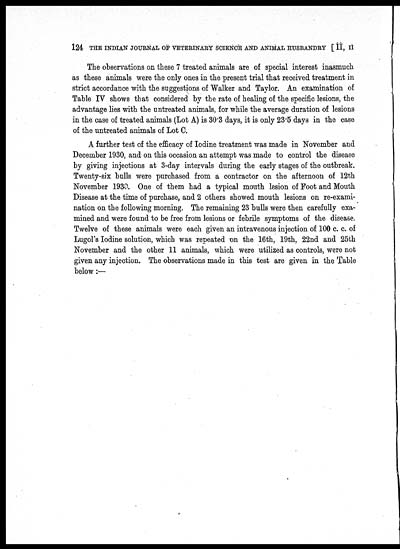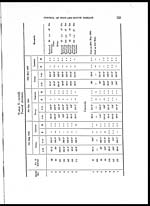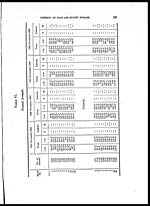Medicine - Veterinary > Veterinary colleges and laboratories > Indian journal of veterinary science and animal husbandry > Volume 2, 1932 > Original articles > Control of foot-and-mouth disease by iodine
(142) Page 124
Download files
Individual page:
Thumbnail gallery: Grid view | List view

124 THE INDIAN JOURNAL OF VETERINARY SCIENCE AND ANIMAL HUSBANDRY [ II, II
The observations on these 7 treated animals are of special interest inasmuch
as these animals were the only ones in the present trial that received treatment in
strict accordance with the suggestions of Walker and Taylor. An examination of
Table IV shows that considered by the rate of healing of the specific lesions, the
advantage lies with the untreated animals, for while the average duration of lesions
in the case of treated animals (Lot A) is 30.3 days, it is only 23.5 days in the case
of the untreated animals of Lot C.
A further test of the efficacy of Iodine treatment was made in November and
December 1930, and on this occasion an attempt was made to control the disease
by giving injections at 3-day intervals during the early stages of the outbreak.
Twenty-six bulls were purchased from a contractor on the afternoon of 12th
November 1930. One of them had a typical mouth lesion of Foot and Mouth
Disease at the time of purchase, and 2 others showed mouth lesions on re-exami-
nation on the following morning. The remaining 23 bulls were then carefully exa-
mined and were found to be free from lesions or febrile symptoms of the disease.
Twelve of these animals were each given an intravenous injection of 100 c. c. of
Lugol's Iodine solution, which was repeated on the 16th, 19th, 22nd and 25th
November and the other 11 animals, which were utilized as controls, were not
given any injection. The observations made in this test are given in the Table
below :—
Set display mode to: Large image | Zoom image | Transcription
Images and transcriptions on this page, including medium image downloads, may be used under the Creative Commons Attribution 4.0 International Licence unless otherwise stated. ![]()
| Permanent URL | https://digital.nls.uk/75227625 |
|---|
| Description | Covers articles from 1932. |
|---|




